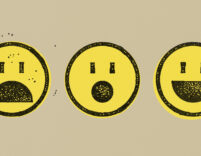The Expertise Advantage: Why Specialized Knowledge Transforms Client Business
The advertising industry has long prided itself on adaptability and the ability to pivot across various clients and industries. The variety of clients I get to work on is one of the main reasons I chose the agency world. But while this versatility remains valuable, specialization and deep industry knowledge have become increasingly crucial in our era of media complexity. For specialized clients, breakthrough results consistently come from agencies that possess four distinct capabilities: industry fluency, regulatory intelligence, audience familiarity and solution synthesis.
Becoming Fluent in “Industry”
“Industry fluency” means understanding not just what your audience does but the pressures, constraints and success metrics driving their daily decisions. Consider technology campaigns: While generalist agencies might place ads across standard business publications, agencies with technology expertise recognize that IT professionals consume information differently. They might read industry publications during lunch, check IT news apps between meetings and engage with forums during commutes. This insight transforms the strategy from broad business targeting to reaching professionals when they’re actively processing industry information.
Regulatory Intelligence Helps Agencies Navigate Complex Environments
Regulated industries pose the biggest hurdles for inexperienced agencies. For example, in healthcare recruitment, generalist agencies might emphasize competitive salaries and benefits, but agencies with healthcare expertise understand that medical professionals prioritize patient-ratio statistics, continuing education opportunities and workplace safety protocols. This leads to campaigns that address career sustainability rather than just immediate benefits, resulting in higher-quality candidates and better retention. Additionally, regulatory frameworks like the Health Insurance Portability and Accountability Act (HIPAA) require new measurement approaches that experienced agencies can navigate effectively.
Audience Familiarity Drives Deeper Connections
Specialized agencies understand the cultural signals and professional nuances within specific sectors. In higher education marketing, multiple audiences operate in different frameworks: Parents focus on career outcomes and rankings, students prioritize campus culture, donors want measurable institutional impact, and alumni seek continued excellence (especially on the sports field). Each operates on a different timeline. For example, parents research for years, but students decide in months. So each group requires distinct messaging, timing, and channel strategies.
Solution Synthesis Unlocks Category Innovation
The most powerful insights emerge when agencies connect behaviors with media consumption patterns. In behavior change work, audiences are most receptive during specific emotional states. Working in behavior change spaces, we know, for example, that smokers ignore health messaging during social situations but actively seek support during private reflection. Weight-loss audiences might engage with motivational content Monday mornings but avoid it during weekend social events. Understanding these patterns allows precise timing, when audiences are psychologically primed for behavior change messaging.
The Client Advantage of Agency Specialization
Agencies with genuine industry expertise provide strategic guidance that influences broader business decisions, not just marketing tactics. They identify emerging regulatory requirements before they impact strategy, navigate industry-specific competitive landscapes and build campaigns that enhance professional credibility while driving conversions.
By working with agencies that truly understand their industry, clients gain partners who can present marketing strategies to internal stakeholders in their language and create messaging that resonates with professional audiences who can see through generic approaches.
In our increasingly specialized world, the most valuable agency partnerships combine deep expertise with creative excellence. Clients who choose agencies with genuine industry knowledge don’t just get better campaigns; they get strategic partners who understand unique market challenges and opportunities, creating advantages others simply cannot match.
















